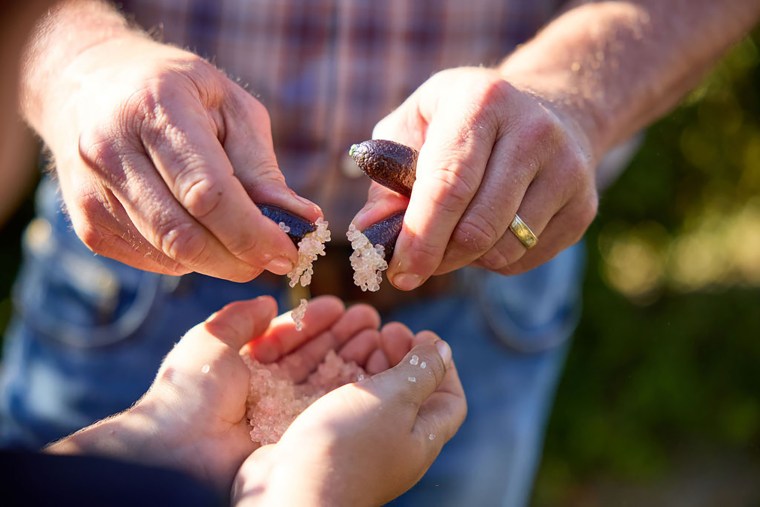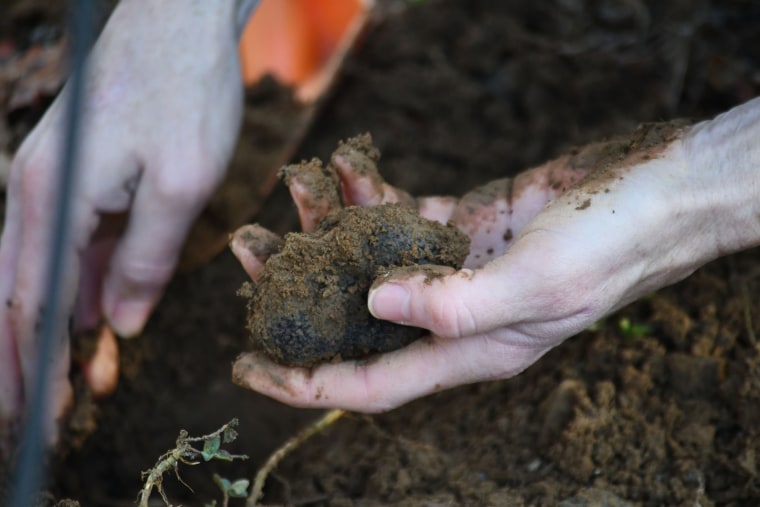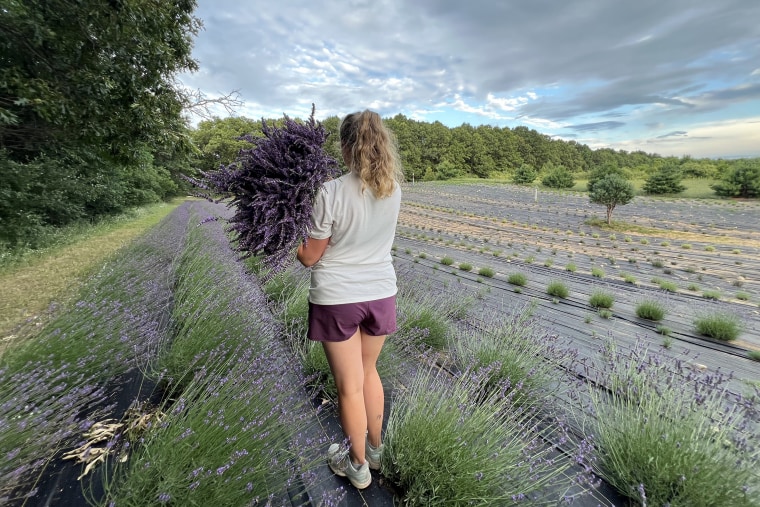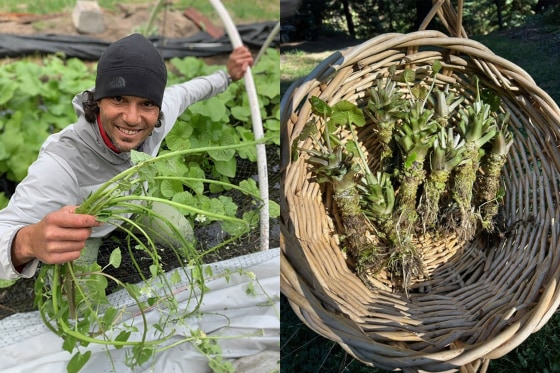Tibor Fischl has been growing goji berries in Sonoma, California, and Washington’s Yakima Valley since 2013.
“I don’t recommend it,” he said.
The nutrient-packed East Asian fruit, which is typically sold dried and blitzed into smoothies or sprinkled over granola, is among the many specialty foods that consumers in the United States rely on foreign growers to provide.
A handful of American farmers grow small volumes of those ingredients domestically, from truffles and lavender to wasabi. Many say it’s tough going, and warn there’s no way they could satisfy U.S. demand at reasonable prices if shifting trade policies were to make their products’ foreign-grown counterparts pricier or harder to get.
Many specialty crops mature slowly and require hefty upfront investments, which is why they tend to be heritage industries in their home countries — often places where stronger local demand, lower labor and shipping costs, and deep cultivation expertise make these items relatively more affordable.
Chinese farmers have grown goji berries for centuries, and they can be bought online for about $20-$30 per pound in the U.S., said Fischl, the CEO of Goji Farm USA. He sells his own for $224 per pound to a dedicated clientele that pays a premium for homegrown health foods. But his price point means President Donald Trump’s new 10% tariffs on China, which took effect last week and drew swift retaliation from Beijing, won’t make his berries more competitive.
“The good news is people have proven that they will show up and pay the prices needed for us to have an existence here,” Fischl said. His business isn’t exactly booming, he said, but “it’s too late for regret.”
In just a few weeks in office, Trump has introduced steeper trade barriers and threats that have triggered uncertainty among allies and rivals alike. His moves have rattled the agricultural sector, even though some farmers expect the policy changes to entice more professional and amateur growers to try planting foreign ingredients that fetch high prices.
The American Farm Bureau said last week that its members “support the goals of security and ensuring fair trade with our North American neighbors and China, but, unfortunately, we know from experience that farmers and rural communities will bear the brunt of retaliation.”Trump imposed 25% tariffs on Canada and Mexico that could take effect next month if diplomacy doesn’t forestall them — or the countermeasures both countries have vowed in response. Trump has also threatened the European Union with steeper import taxes and campaigned on “universal” tariffs of up to 20% on every foreign product, fees economists expect consumers to pay.
Niche produce farmers in the U.S. are poised to benefit from some of these trade policies, at least in theory, and some have already succeeded in cornering a market for popular high-end ingredients with few domestic suppliers.
Shannon Maas was a collegiate track coach before becoming a wasabi farmer. He didn’t even know the pungent Japanese root could be cultivated in the U.S. until 2019, when he saw a social media video about it. After growing three test plants at home in Northern California, he cashed a Covid-19 stimulus check to buy a thousand more.
The gamble paid off, Maas said, and he’s now among the few domestic wasabi growers in the country. He sells his crops to some of San Francisco’s top restaurants for around $115-$150 per pound and collects a healthy profit, “although most of my money goes back into growing the farm or my mother’s Venezuelan family, who need the money more than we do,” he said.
“I’m trying to just make something out of nothing,” Maas added. “It’s the American dream.”

But Maas knows he’s an outlier, having figured out how to capitalize on a microclimate similar to regions of Japan that have long produced wasabi. The reason the authentic product is imported is because it’s so hard to grow outside its native environment without producing a bitter taste. In fact, most of what’s sold as wasabi to U.S. sushi eaters is a horseradish-based substitute, Maas said.Jeff Roller, who runs Half Moon Bay Wasabi some 30 miles south of San Francisco, agreed that high price tags can make niche farming seem enticing.
“They see the dollar signs,” he said of prospective growers, but creating a clientele of consumers and chefs for uncommon ingredients can be just as hard as cultivating them.
Matthew Rendine, the director of merchandising for Baldor Specialty Foods, a major restaurant distributor in the Northeast, is optimistic about these domestic alternatives, which bypass expensive air freight costs and can sometimes be cheaper than importing.
“If we can offer our chefs the same quality and flavor and consistency of an item, and have it be grown in California, I’d rather give our chefs that product versus something that’s 8,000 miles away,” he said.
Rendine works with many small farms that have diversified their crops by adding niche produce to their lineups. But while these items can be lucrative for dedicated growers, many farmers and hobbyists struggle.
A lot of agriculture is trial and error, he cautioned. “Everybody fails at certain things.”
Megan Shanley has had her share of successes and failures. She took over her Morro Bay, California, family farm from her father, who tried a myriad of specialty crops. After goji berries and organic figs were a bust, she has moved on to finger limes.
The Australian fruit is dubbed “citrus caviar” for the small pearl-like vesicles inside. Outside of high-end restaurants and her son’s school playground — where Shanley said the kids have grown to love them — finger limes aren’t widely eaten in the U.S. Her business is buoyed for now on passionfruit and avocados, and the jury’s still out on whether finger limes will land in the win column.

“If the finger limes take off and we earn what we can potentially earn, I can’t just walk away from that at this point,” Shanley said.Patience is key, said Pat Martin. She started a truffle farm in Rixeyville, Virginia, in 2007 that didn’t produce its first mature truffle until 2018.
“We are harvesting, so that’s good, but we are not at full harvest potential yet,” she said. “It’s certainly not making a profit.”
Over 75% of U.S. truffle imports come from Italy, worth some $16.4 million in 2022, according to data from CEPII, a French government economics institute. Selling her winter black truffles at $85 per ounce, Martin said her prices generally compete with Italian cultivators’. It’s a key reason she said she’s seen strong interest from restaurants, but she doesn’t produce enough to promise a consistent supply.

“The demand for truffles is high, and I think it would take us a long time, if ever, to flood the market,” she said.Sierra Reece started a small farm in Rockford, Michigan, in 2023 that grows lavender, which isn’t as rare a domestic crop as truffles or finger limes. American-grown lavender notched over $16 million in U.S. sales in 2019, federal data shows. But Reece grows a culinary-grade variety, which is less common and comes mainly from France and Bulgaria.
After investing in 6,000 plants across two acres, Reese said she’s now turning a profit, which smells of victory after years of brushing off doubters.
“That was kind of my competitive edge,” she said: “‘Let me prove you wrong.’”

